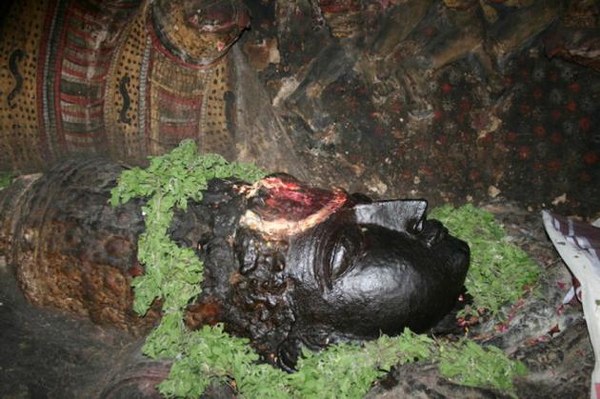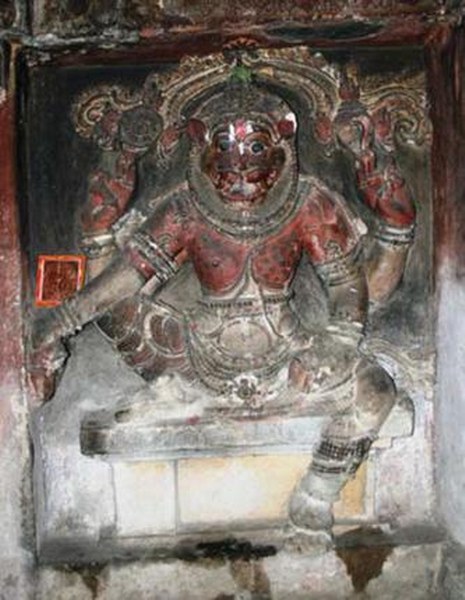 The Olipathi Vishnugraham Cave, Near Tiruchi, is an unusual cave with splendid sculptures and architectural features. The beauty and radiance of Vishnu has captivated many and his praise sung from time immemorial. One glance of the lotus eyes – Kamalakshan – is enough to make one His slave for eternity. The truth of this was apparent when we reached the 9th C CE Olipathi Vishnugraham cave after a 45 km drive from Tiruchi on the highway towards Thanjavur.
The Olipathi Vishnugraham Cave, Near Tiruchi, is an unusual cave with splendid sculptures and architectural features. The beauty and radiance of Vishnu has captivated many and his praise sung from time immemorial. One glance of the lotus eyes – Kamalakshan – is enough to make one His slave for eternity. The truth of this was apparent when we reached the 9th C CE Olipathi Vishnugraham cave after a 45 km drive from Tiruchi on the highway towards Thanjavur.
The cave faces north and has been carved into a large boulder in an outcrop of rock. It has some exquisite sculptures with remnants of stucco and paintings works, but the pride of place is the 15 ft reclining Vishnu in the sanctum. The face radiates a certain kind of inner peace, kudos to the skill of the master sculptor who was able to get such a degree of perfection while carving a monolith stone inside hollowed out cave. The sharpness of the bridge of the nose and the subtle flaring of the nostrils add an ethereal charm to the sculpture. There are a multitude of relief panels surrounding Him on the walls inside the sanctum and a few interesting ones in the ardha mandapam. The mandapam also has a rare depiction of the ten avatars of Vishnu painted on its top.
One can see, to the left of the sanctum, in the artha mandapam, a sculpture of Sri Narasimhar. Seated in Utkutikasanam, where the right leg is on the pedestal and the left leg is seen resting on the ground, the Lord is shown with four hands, the upper ones holding the Conch and Chakra (notice the chakra is turned flat and not in the Prayoga form). The richly ornamented sculpture has been painted dark red and has rich floral motifs on His vest, multiple necklaces and cute anklets on His feet. What is interesting and puzzling is the presence of not one but two Srivatsa marks – one on each chest.
In Vaishnavite ideology, every aspect of His form is auspicious and the mark of Srivatsa, which along with the Kaustubha gem, the Vaijayanti garland, Kaumodaki club, Sudarsana disc and Panchajanya conch embellish Him. This mark or mole on his right chest is seen in every avatar of His and is seen in early iconography as a triangular mark, with three leaf like marks or a flower with four petals inside, before evolving to depictions of Lakshmi herself. This 13th C Chola bronze idol, currently at the National Museum, New Delhi, shows the placement and style of the Srivatsa. The Srivatsa is particularly useful in differentiating between identical iconographical depictions – for eg., those of dancing Gnanasambandhar and Narthana Krishna.
That this Vishnu cave and its adjacent Siva cave, which is assigned a slightly earlier date due to the presence of an 804 CE Dantivarma Pallava inscription, hardly receives any visitors is a sad reflection of our regard for heritage treasures.